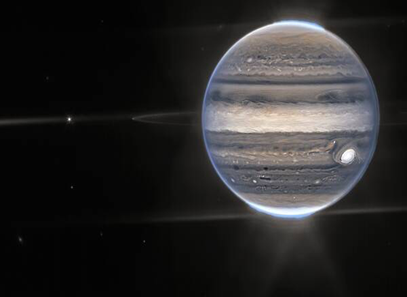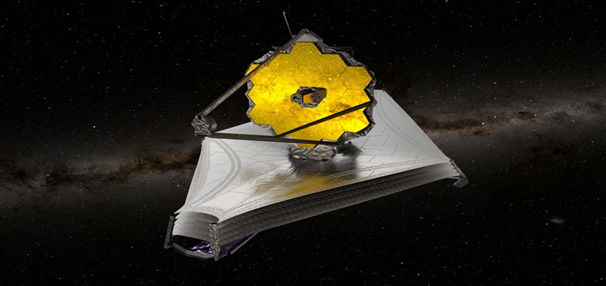New images of our solar system’s largest planet, Jupiter
Context
The James Webb Space Telescope, NASA’s latest and most powerful telescope, has captured new images of solar system’s largest planet, ‘Jupiter’, presenting it in a never before seen light.
About
- The photographs presents in detail its massive storms, colourful auroras, faint rings and two small moons
- Amalthea
- Adrastea
- The yellow and reddish-brown gas giant, the telescope’s Near-Infrared Camera, with its specialized infrared filters, has shown Jupiter encompassed in blue, green, white, yellow and orange hues.
- Infrared light is not visible to the human eye, the images were artificially coloured to match those on the visible spectrum, so that the planet’s distinctive features could stand out.
- Jupiter’s famous Great Red Spot, a storm so big that it could swallow Earth, appeared bright white in the image, since it was reflecting a lot of sunlight.
- The brightness here indicates high altitude — so the Great Red Spot has high-altitude hazes, as does the equatorial region.
- The numerous bright white ‘spots’ and ‘streaks’ are likely very high-altitude cloud tops of condensed convective storms.”
- NASA’s $10 billion James Webb Telescope was developed with the assistance of the European Space Agency and the Canadian Space Agency.
- It was launched to space on December 25, 2021 and is currently observing from Lagrange point 2, approximately 1.5 million km beyond Earth’s orbit around the Sun.
- The telescope released its first image on July 11 2022.
The technology
- The incredible images taken by the James Webb telescope don’t arrive on Earth as we currently see them.
- Instead, scientists receive raw data about the brightness of the light captured on Webb’s detectors, which is then processed and translated into images by the Space Telescope Science Institute (STScI), Webb’s mission and science operations centre.
About Jupiter and its moon
- Jupiter is the largest planet in the solar system, twice as massive as all the other planets, moons and asteroids in the solar system put together.
- More than 90 percent of Jupiter’s mass consists of swirling gases, mostly hydrogen and helium; in this incredibly thick, dense atmosphere, storms of incredible magnitude rage and swirl.
- Jupiter’s upper atmosphere is composed of about 88–92% hydrogen and 8–12% helium by percent volume or fraction of gas molecules.
- There are also traces of carbon, ethane, hydrogen sulfide, neon, oxygen and sulphur.
- The outermost layer of the atmosphere contains crystals of frozen ammonia.
- The largest of these storms is the Great Red Spot, which is often visible from Earth through even a small telescope.
- A day on Jupiter is only 9 hours 56 minutes which makes it the fastest rotating planet / body in the solar system.
- Jupiter is 1,300 times Earth’s volume and 320 times Earth’s mass.
About James Webb Space Telescope
|


